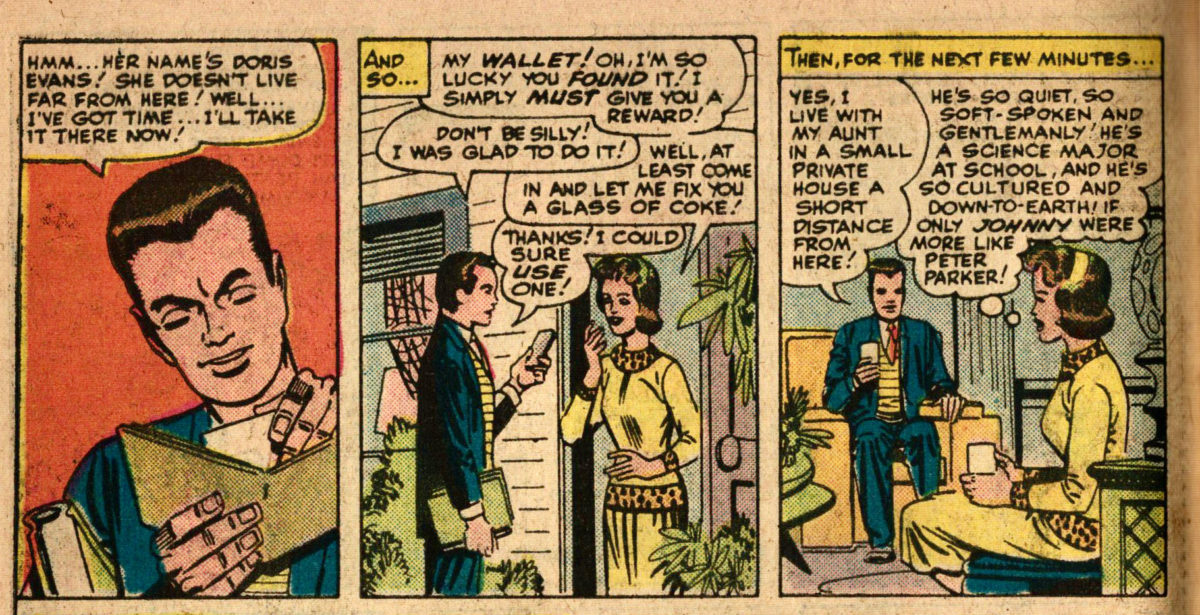Featuring: Fantastic Four
Release: September 8, 1964
Cover: December 1964
12 cents
Script: Smilin’ S. Lee
Art: Jolly Jack Kirby
Inks: Chucklin’ Chic Stone
Lettering: Amiable Art Simek
20 pages
| Previous | #272 | Next |
|---|---|---|
| Sgt. Fury #12 | Reading order | Tales of Suspense #60 |
| Fantastic Four #32 | Fantastic Four | Fantastic Four #34 |
Kirby has used these photo collages a few times now, but this is the first cover that combines art with photographs in a cool collage.
This is the first time Stan’s name has ever been abbreviated in the credits: “S. Lee”. I’m guessing the letterer just ran out of room.

Namor is again the king of Atlantis (the exact same month Aquaman is first named king of Atlantis at the Distinguished Competition). Namor has the most fickle people. They moved the entire kingdom once so he couldn’t find them because of his affection for Sue. But I guess that’s all forgotten now.

The story is that Dorma betrayed Namor because he scorned her love, so she helped Attuma’s armies gain entry to Atlantis so Attuma could seize the throne. Women, eh?
Continue reading “Fantastic Four #33”































